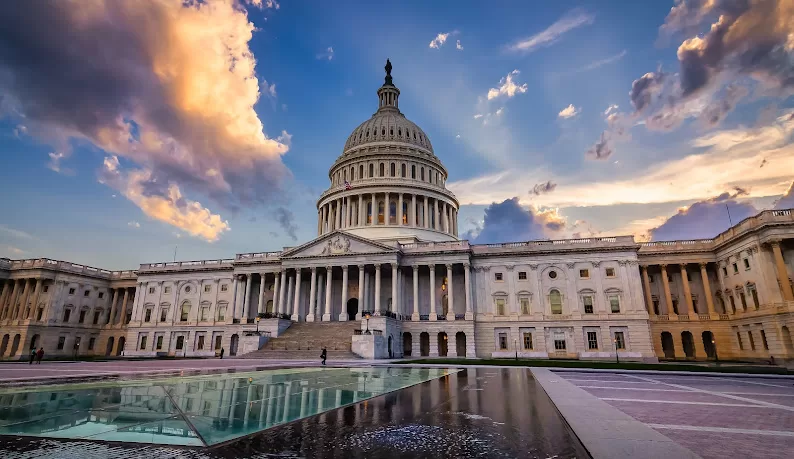
WASHINGTON, May 22 (WSH) — President Donald Trump’s landmark tax and spending legislation, the “One Big Beautiful Bill Act,” narrowly passed the U.S. House of Representatives on Thursday with a razor-thin margin of 215 votes to 214. The bill now advances to the Senate, where its future remains uncertain amid internal party divisions and broader economic concerns.
The sweeping bill, over 1,000 pages long with an additional 42 pages of last-minute amendments, touches on nearly every major domestic policy issue — from tax cuts and welfare reform to military spending and immigration enforcement.
Key Provisions of the Bill
-
Extension of 2017 Trump Tax Cuts:
Makes permanent the individual and corporate tax reductions passed during Trump’s first term, which were originally set to expire at the end of 2025. -
SALT Deduction Cap Increase:
Raises the deduction limit for state and local taxes from $10,000 to $40,000, providing significant relief to residents of high-tax states. -
Targeted Tax Reliefs:
Introduces new deductions for tips, car loans, and other daily expenses; expands child tax credits; and creates “Trump Savings Accounts” for newborns. -
Spending Measures:
Includes $1.5 trillion in new defense spending and $1.75 trillion allocated to immigration enforcement, including funding for border wall construction and enhanced surveillance systems. -
Welfare Reform:
Imposes stricter work requirements for Medicaid starting in 2026 and trims funding for programs like food stamps and public health subsidies. -
Debt Ceiling Raised:
Increases the U.S. federal debt limit by $4 trillion to avert a potential default, drawing sharp criticism from fiscal conservatives. -
Environmental Rollbacks:
Begins dismantling clean energy tax credits introduced under the Biden administration, significantly cutting federal incentives for green technology and electric vehicles.
Political Fallout and Party Reactions
The bill’s narrow passage underscores the deep divide not only between Republicans and Democrats, but also within the GOP itself. To secure the needed votes, House Speaker Mike Johnson engaged in intense, last-minute negotiations, adjusting language to appease both hardliners and moderates.
“This is a victory for the American people,” Johnson said after the vote. “We have delivered on our promise to cut taxes, secure the border, and restore fiscal sanity.”
Democrats, however, blasted the bill as regressive and fiscally reckless.
“Republicans’ tax scam will hurt working families the most while giving billionaires like Elon Musk huge tax breaks,” said House Minority Leader Hakeem Jeffries.
Senate Majority Leader Chuck Schumer called it “an ugly, partisan mess,” vowing that Democrats would fight its passage in the upper chamber.
Senate Prospects and Modifications Ahead
While Senate Republicans have unlocked the budget reconciliation process to bypass Democratic filibusters, several GOP senators have already expressed discomfort with the current version of the bill. Lawmakers from high-poverty or rural states are pushing back on Medicaid changes and education cuts, while others are demanding alterations to military and environmental provisions.
Senate debate is expected to stretch into June, with some Republican leaders aiming to finalize a unified version before the July 4 holiday recess.
Economic Concerns Mount
The nonpartisan Congressional Budget Office projects the bill will add $2.3 trillion to the national debt over the next decade. The U.S. debt currently stands at $36.2 trillion, a figure that continues to concern bond markets and credit rating agencies. Moody’s recently downgraded the U.S. outlook, citing rising deficits and unsustainable fiscal policies.
“Despite its political appeal, this bill is a ticking time bomb for the U.S. economy,” the Committee for a Responsible Federal Budget said in a statement, warning that the legislation sets up a “fiscal cliff” when temporary provisions expire.
What’s Next
With the Senate poised to make substantial changes, all eyes are on how party leadership navigates internal dissent while trying to fulfill Trump’s legislative agenda. The outcome will significantly shape not only the trajectory of U.S. fiscal policy, but also the landscape of the 2026 midterm elections.

